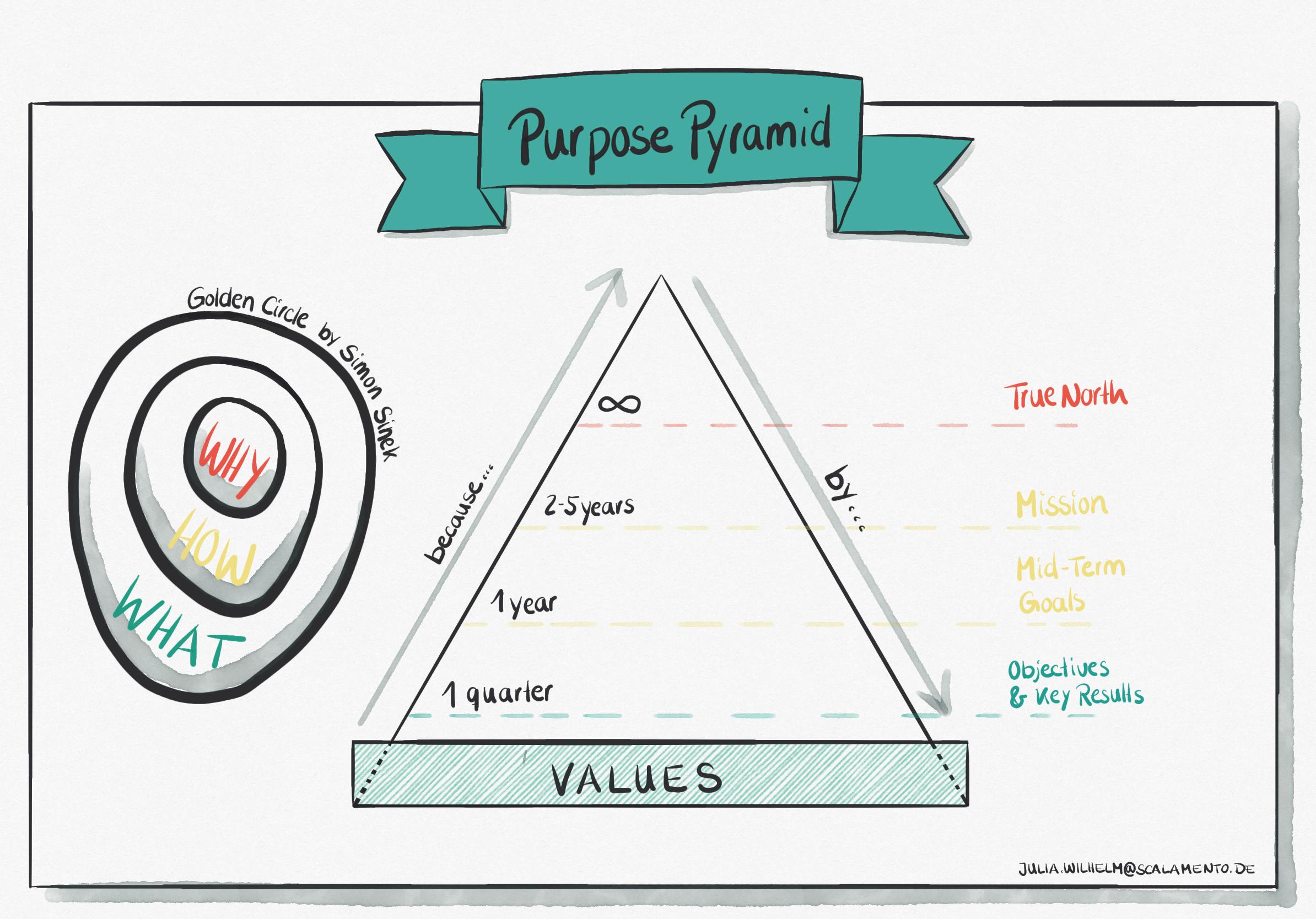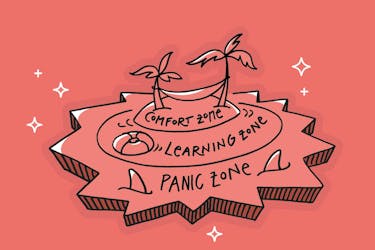That's how it works
The purpose pyramid specifies why an organization exists and how it wants to achieve which goals. Every added value achieved within the company is linked with these corporate goals, top-down and bottom-up.
That's the benefit
Provides orientation for self-organization. Allows all employees to be aligned with the company goals to be achieved.
In Detail
The Purpose Pyramid is structured as follows:
1. True North:
At the top is the True North, this is unattainable and therefore permanently valid. The True North contains the purpose of a company and why it exists or which problem was in the foreground when the company was founded. It is closely linked to the WHY according to Simon Sines. If you don't know Simon Sinek and the related question of WHY, we recommend the Ted Talk by hin or the book "Find you why" (Simonsinek.com).
2. Mission
Below the True North, on the second level, is the mission. A mission is usually valid for a period of 2 to 5 years. It describes the way to approach the True North or company purpose.
3. Moals
The next level down are the annual goals, which as the name suggests are set for 12 months. There are also called Mid Term Goals (MOALS for short).
4. Short-term goals
The fourth level of the pyramid is formed by the short-term targets. The can be quarterly targets or OKRs, which are defined for 3 months.
And how does the whole thing build on to each other?

The describes levels are connected by two essential questions. If you take a look at the illustration, you may have noticed that the arrows with the words "by" and "because". These help to link the four levels described logically and in terms of content. In concrete terms, this means: "We will achieve our True North XY by achieving out mission, by achieving our annual targets, and by achieving out defined quarterly targets. Accordingly, from the bottom up, there must be a logical cadence in the goals. I work on the quarterly goals because I wand to achieve the annual goal XX. And I wand to achieve the annual goal YY because it is aimed at the mission and I am working on the mission so that I can achieve my defined True North. This means that everything I record in the pyramid must be linked by "by" and "because" and as a consequence created a logical cascade.
As mentioned at the beginning, this form of pyramid with a logical link down to an operational activity is very helpful in our opinion. Because in addition to quarterly goals, you can of course also look at individual sprints and go from the sprint level to a thick level and so on. Since the Purpose Pyramid, if set up well, results in a logically coherent construct, every operational action can theoretically be checked against it. Alignment with the purpose thus creates guidance and orientation in the absence of direct hierarchical instructions, as each individual can better classify his or her daily actions.
If you look again at the image of the pyramid, you will see the values at the bottom. This refers to the company values, which serve as a filter. On all levels you should make sure that the goal, the True North, or an operational activity fit to the value base of the company. If this is not the case, it becomes problematic and one should rethink the objective.
Scalamento recommends
Working out your own Purpose Pyramid together at a company level and at a team level. Knowing your True North and taking it into account when deriving the mission, the moals and lastly quarterly goals has a very positive effect: On the one hand, each employee knows how he or she is contributing to the company goals which leads to higher motivation. On the other hand, it creates a sense of purpose and direction for the daily tasks of teams and individuals.
Related Topics

Team Charter

Learning Zone Model



